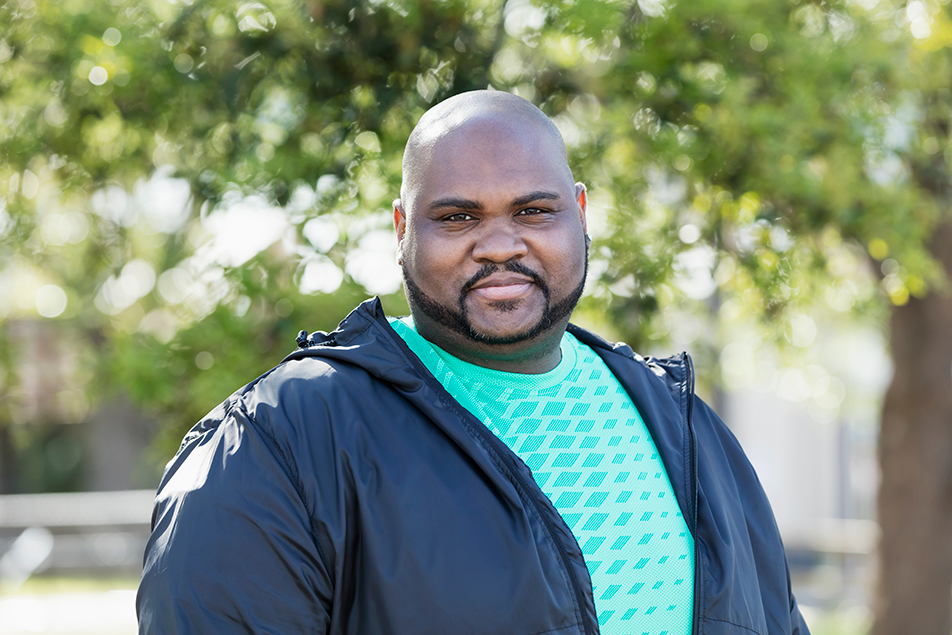
The past year has brought about so many changes, particularly when it comes to the things we consume and the ways in which we consume them. We spoke with Ryan Singerman, DO, PPG – Family Medicine, PPG – Weight Management & Bariatric Surgery, regarding the impact of a potential rise in alcohol and caloric intake as a result of the shifts many have experienced during the pandemic, and what it means for instances of fatty liver disease.
How does one typically discover they have liver disease?
Unfortunately, there aren’t really symptoms associated with mild liver damage. A physician would have to take note of potential risk factors and be curious enough to order the bloodwork necessary to diagnose the problem. Usually, by the time a patient is having symptoms, the damage has gone from mild to pretty advanced. This is why we want to catch liver damage early and keep it from progressing.
If the liver disease is advanced, a patient might experience swelling, mostly in the abdomen, or a yellowing of the skin or eyes. If you notice these changes, it’s important to reach out to your physician right away.
What causes liver damage or fatty liver disease?
I have been through multiple board certification processes and received a lot of continued education, and I can tell you that we have an epidemic of undiagnosed fatty liver disease in the U.S. population. This, of course, compounds long-term concerns of liver failure. In fact, experts believe that by 2030 fatty liver disease (liver disease caused by excess weight) will be the leading cause of needing a liver transplant in the U.S., surpassing hepatitis and alcoholic liver failure.
When we carry excess weight, the body takes fat cells and puts them everywhere in our body, not just the places we can see. It deposits fat around our internal organs, including the heart, kidneys and liver. But it gets particularly invasive around the liver, and starts breaking down the normal cell walls and causing inflammation.
It’s important to remember that this condition impacts children as well. If a child has excess body weight, we have to take that seriously. We’ve seen patients as young as seven who had liver damage.
For physicians, red flags include if a patient has diabetes, excess body weight or high triglycerides, but there are other risk factors as well, including:
Gender: In my practice, I deal specifically with people who have excess body weight, so I see both men and women who have liver damage. That being said, it is a bit more common with women.
Alcohol use: Traditionally, excess alcohol consumption has been a leading cause of liver damage. Because the liver is basically a filter that tries to clean our bloodstream, when you drink more alcohol and the liver tries to break it down, our ability to handle alcohol goes down the more you drink. That leads to damage over time, including inflammation and ultimately disease.
Tylenol use: Too much Tylenol, for both young people and adults, can lead to liver damage. This substance is found in many over-the-counter and prescription medications. So, while taking the recommended amount at the recommended intervals for a short time can be OK, it’s important that a person also take other medications into account. Just like calories, this medication can add up fast. Taking more than the recommended amount for longer than recommended can impact the liver, as can other medications. Generally speaking, it is safe to stay at or under 4,000 mg every 24 hours. You don’t want to continue this for weeks on end, but if you are sick or have pain, this should be acceptable.
Disease: Some viruses, including hepatitis B and hepatitis C can cause chronic damage and liver failure as well. These are conditions one catches from a sexual partner or infected needle.
Are there trends around the pandemic that are contributing to cases of fatty liver disease?
Because of how common excess body weight is in our country, we’re seeing a massive influx of fatty liver disease. This is because of the types of foods we eat, the amounts we eat and our energy balance coming into the body.
We have to look at where extra calories are coming from and how we can turn that around. If alcohol consumption is going up as a result of the pandemic, not only can that lead to liver damage on its own, but the calorie content in these beverages is also extremely high. You could have a few drinks and consume an additional 700 calories without even realizing it.
A lot of people are home a lot more than they used to be. If you’re on a video conference and bored, the pantry or refrigerator is a few steps away. We’re snacking more because we want to pass the time and that can be dangerous.
I’ve also seen the Impact of a lack of community. We can’t meet with our therapists, or go to church, or see our family on the weekends. A lot of struggle comes from that. We have people who are unemployed or facing financial difficulty. There are tremendous headwinds facing our country, and we all have to come together to lift each other up and seek long-term solutions.
What is the role of mental health as it pertains to weight management?
Looking at the past year, we’ve been through emotional trauma. So much has changed. We’re wearing masks, we can’t go do what we used to. It’s no surprise that people are trying to self-medicate with food and alcohol.
As a physician, I deal with mental health on a daily basis. When a patient is having anxiety, depression or experiencing grief, because of the loss of a loved one or their way of life, we have to make space to grieve. I encourage people to work with local counselors, because medication works, but it works best in conjunction with therapy. Sometimes people find the relief they need through therapy alone.
If you went and ran a marathon without any training, you wouldn’t do so well. But if you took six months and slowly increased your mileage, you would definitely be able to finish. We have to work with the public to understand that counseling is not for those who are broken, it’s just like training for a marathon, so that when anxiety comes you are equipped to handle it. It’s about building framework for the brain and emotional state so that when that stressor comes in you are prepared. Ultimately, you have to balance your lifestyle and mental health to achieve your goals.
Why is weight loss such a struggle for so many?
Our culture tries to normalize things like excess body weight and overeating. But there’s a difference between fat shaming, which is horrific, and recognizing that someone has a disease. It’s not as simple as saying you need to push away from the table and go to the gym. The disease of obesity has 52 distinct different types. It’s far more complex than people realize, so we have to treat people on an individual basis.
I’m sure many reading this are frustrated because they’ve tried to eat less and move more, and it hasn’t worked. In truth, about 80% of the public struggle with losing body weight on their own. Only 20% can do it without further support. So if you need extra help, that’s OK. Your physician can help you understand the lifestyle changes necessary to see improvement. It takes roughly 21 days to build a healthier habit. Unfortunately, it takes 42 days to break an old one.
Can the liver recover on its own?
The bottom line is yes. When you remove the insult, you can often recover the health of the liver, but it depends on the stage the liver is in. There are many stages and the further down you get, the less likely it can recover on its own. We want to find mild liver disease and help by reducing alcohol intake, calorie consumption and medications, and change lifestyle factors that coincide with the damage so we can impact long-term risk.
If you are struggling with excess body weight or nervous about potential liver damage, help is available. Connect with a professional who is board certified in weight loss. Be cautious of anyone who is not qualified to assist you. There are so many underpinnings to this complex disease, and you should be wary of sources that aren’t backed by science. The solution is not a one-size-fits-all, but there is hope for change.



